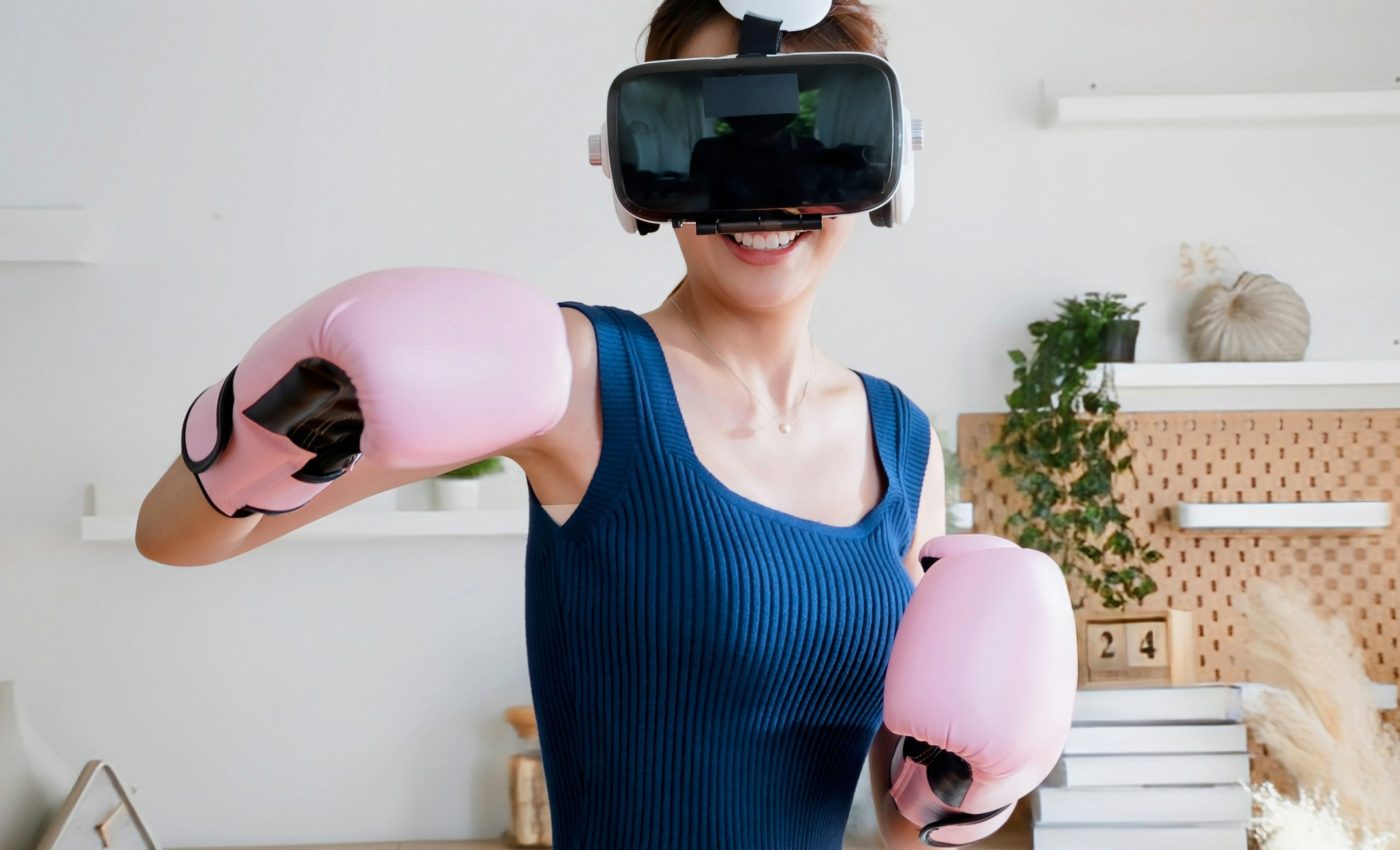
Emotionally intelligent VR will change the way you exercise
Virtual reality (VR) video games that combine exercise with screen time – often called “exergames” – offer a fun way to get fit. However, similar to traditional exercise routines, adherence to exergames is low, with many users dropping out once the activity becomes too uncomfortable or monotonous.
Computer scientists at the University of Bath believe they may have found a solution to this problem: developing exergames that continuously monitor a user’s emotional state through advanced sensors and adjust the game in real time to keep players engaged.
For example, the game could be made easier if the user is struggling or ramped up with more obstacles when they’re ready for a challenge.
Video games and physical exercise
Dominic Potts, lead author of a new study exploring this innovative use of sensor technology to maintain user motivation, noted that when it comes to physical exercise in all forms, motivation and exercise adherence are huge problems.
“With exergaming, we can address this issue and maximize a person’s enjoyment and performance by adapting the challenge level to match a user’s abilities and mood,” said Potts.
“Exercise games that are completely adaptive will sense a person’s emotions and give them more ‘rewards’ when they’re struggling, and more obstacles when they’re ready for a new challenge.”
Personalized fitness games
The findings, published in the Proceedings of the CHI Conference on Human Factors in Computing Systems, represent a significant step toward developing personalized fitness games that can keep users engaged longer.
Game designers have long aimed to create personalized exergames that adapt to a user’s changing emotions and challenges as they exercise. However, accurately measuring a user’s emotional state during physical activity has been a difficult hurdle to overcome.
Most available technologies have been unreliable, especially during intense movement, making it hard to gauge whether a person is feeling happy, stressed, or bored.
Sensors to track user emotions
The research team at Bath made a breakthrough by utilizing an innovative range of sensors – embedded in VR headsets or wearable devices like smartwatches – that track physical changes during exercise.
The sensors can measure various physiological indicators, including pupil size, facial expressions, heart rate, sweating, and skin inflammation. This data allows the game to understand how the user feels in real-time and adjust accordingly, creating a more engaging experience.
Potts noted that traditional sensor technologies, while effective when users are sedentary, often fail to deliver accurate readings during exercise because of the “background noise” generated by the user’s movements and the virtual environment (VE). For instance, pupil dilation might be triggered by lighting changes in the virtual world rather than reflecting a user’s emotions.
How different emotions affect exercise performance
In the study, 72 participants took part in a VR cycling race. The researchers employed a specific combination of sensors to track various physiological factors.
The cyclists raced through four distinct VEs, each designed to evoke a particular emotion: happiness, sadness, stress, and calmness. The participants experienced these emotional states while exercising at low, medium, and high intensities.
Through these observations, the team could map how different emotions affected each user’s performance and how well the game’s difficulty level aligned with their emotional and physical responses.
Emotionally engaging exergames
As a result of this study, the researchers developed eight key guidelines for creating more emotionally engaging exergames, including:
- Correcting for lighting changes: Pupil-detecting sensors should account for luminosity shifts in the virtual environment, ensuring they accurately reflect emotional changes rather than external factors.
- Taking pre-existing conditions into account: Pre-existing levels of sweating should be considered when predicting stress and arousal in the nervous system.
- Filtering data: Sensor data should be regularly cleaned during gameplay to remove unrelated signals, making sure the game is appropriately tailored to each user’s emotional state.
- Using multiple sensors: Employing a variety of physiological sensors can improve the accuracy of predicting a user’s emotional state, creating a more personalized experience.
“In the long run, our objective is to make VR exercise emotionally intelligent,” said Christof Lutteroth, director of the REVEAL research center and co-investigator at CAMERA, both based at the University of Bath.
Rising popularity of VR fitness games
Lutteroth also highlighted the growing popularity of VR physical activities, noting their use in various settings, including schools, rehabilitation, and sports science.
“We fully expect VR physical activities to explode in popularity in the years ahead – school children are already using them as part of their exercise programs, and they are also being used in rehab and sports science – so it’s important to focus on making technology that’s emotionally intelligent and adaptive to differences between users,” he said.
By developing exergames that adapt to the user’s emotional and physical state, the researchers hope to create more immersive fitness programs that can keep people pedaling, running, or lifting weights long after they might have given up in a traditional setting.
—–
Like what you read? Subscribe to our newsletter for engaging articles, exclusive content, and the latest updates.
Check us out on EarthSnap, a free app brought to you by Eric Ralls and Earth.com.
—–













